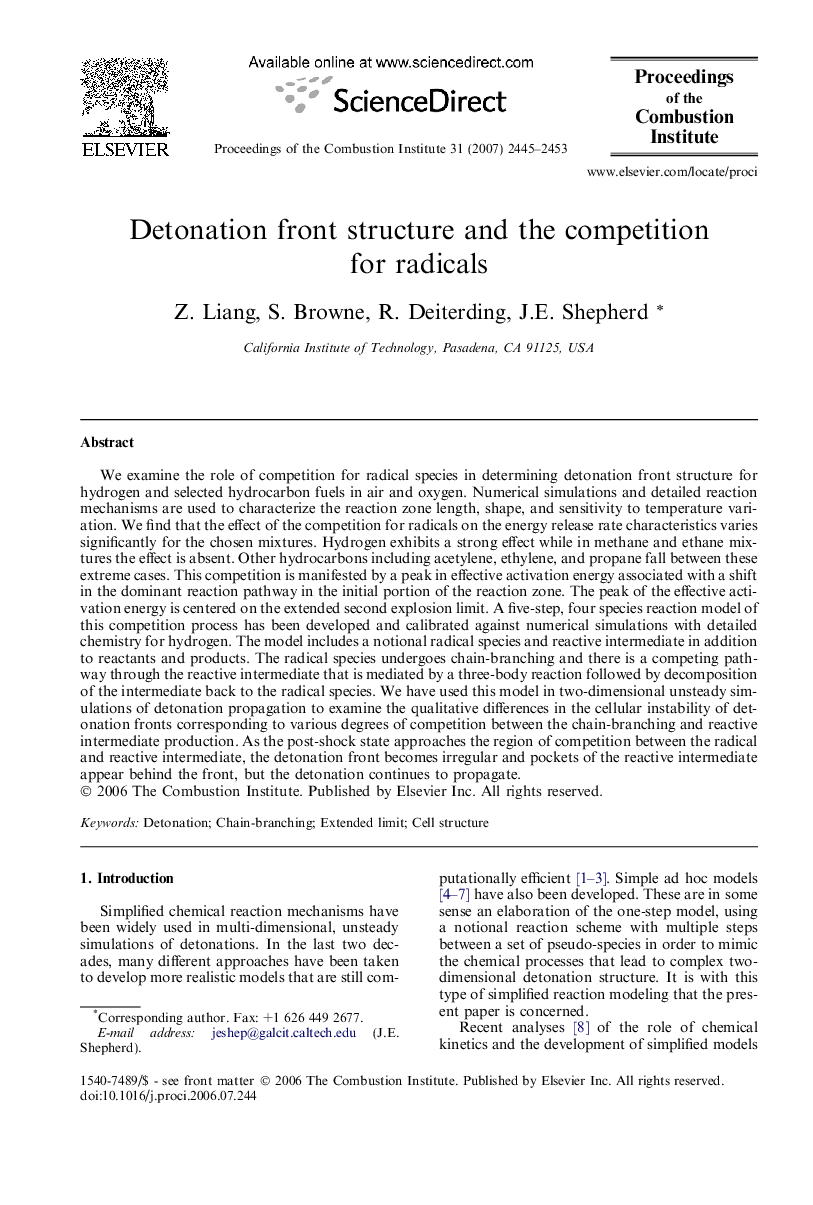| کد مقاله | کد نشریه | سال انتشار | مقاله انگلیسی | نسخه تمام متن |
|---|---|---|---|---|
| 241295 | 1427928 | 2007 | 9 صفحه PDF | دانلود رایگان |

We examine the role of competition for radical species in determining detonation front structure for hydrogen and selected hydrocarbon fuels in air and oxygen. Numerical simulations and detailed reaction mechanisms are used to characterize the reaction zone length, shape, and sensitivity to temperature variation. We find that the effect of the competition for radicals on the energy release rate characteristics varies significantly for the chosen mixtures. Hydrogen exhibits a strong effect while in methane and ethane mixtures the effect is absent. Other hydrocarbons including acetylene, ethylene, and propane fall between these extreme cases. This competition is manifested by a peak in effective activation energy associated with a shift in the dominant reaction pathway in the initial portion of the reaction zone. The peak of the effective activation energy is centered on the extended second explosion limit. A five-step, four species reaction model of this competition process has been developed and calibrated against numerical simulations with detailed chemistry for hydrogen. The model includes a notional radical species and reactive intermediate in addition to reactants and products. The radical species undergoes chain-branching and there is a competing pathway through the reactive intermediate that is mediated by a three-body reaction followed by decomposition of the intermediate back to the radical species. We have used this model in two-dimensional unsteady simulations of detonation propagation to examine the qualitative differences in the cellular instability of detonation fronts corresponding to various degrees of competition between the chain-branching and reactive intermediate production. As the post-shock state approaches the region of competition between the radical and reactive intermediate, the detonation front becomes irregular and pockets of the reactive intermediate appear behind the front, but the detonation continues to propagate.
Journal: Proceedings of the Combustion Institute - Volume 31, Issue 2, January 2007, Pages 2445–2453